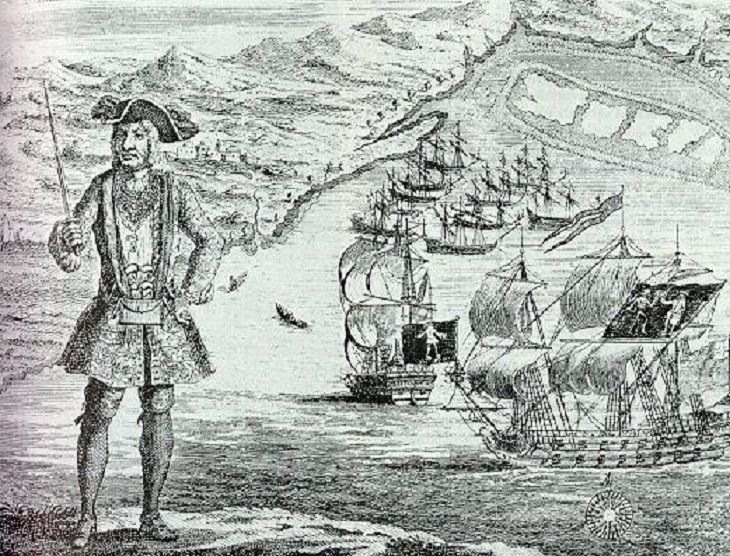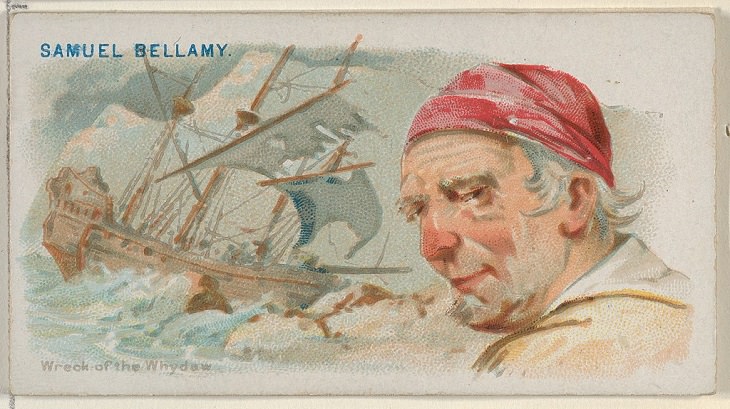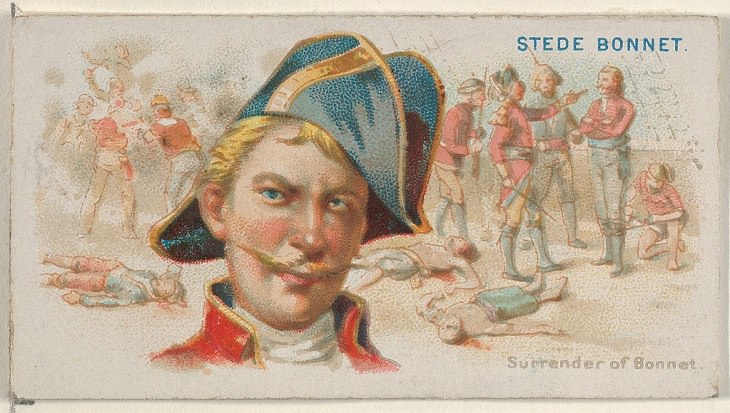
Piracy is a word that is frequently used to describe the acts of illegally downloading or selling copyrighted media. It also refers to the activities of certain armed captors and thieves found in isolated stretches of ocean that target wealthy cruises and ship owners. Nowadays, piracy takes the form of kidnappings for ransoms and threats screamed from behind the barrel of a machine gun. Not too different from the heavy-hatted, black-bearded, eye-patch wearing scourges that once roamed the seas with a skull and crossbones on their flag and a mermaid on their mast.
These peg-legged pirates that have been the inspiration for numerous stories and the stuff of legends belonged to what is termed as the Golden Age of Piracy, a 30 year stretch from 1695 to 1725, during which time these infamous sailors commandeered their way to fortune and mass fear. These are the stories of 4 of the greatest pirates to have pillaged and plundered their way across the ocean to eternal fame during the Golden Age.

(By Benjamin Cole, Wikimedia Commons)
Born John Roberts in 1682, there is little record of his childhood, though it is believed that he spent time at sea from the young age of 13. The oldest record of Roberts showed that he was a mate on a Barbados sailing ship in 1718. The following year, he became the second mate on a slave ship called the Princess, which was captured by pirates, led by Captain Howell Davis. Roberts and several other members of the crew were then forced into a life of piracy.
Roberts was taken under the wing of Davis, who noticed his incredible skills as a navigator and felt a certain kinship with him as both were Welshmen. While Roberts was initially hesitant, he soon embraced the pirate’s life and all the wealth, ease, and adventure it offered. When Davis was ambushed and killed 6 weeks later, while attempting to capture a governor to hold for ransom, Roberts was elected to be the new captain of the vessel.
His first act as captain was to avenge his captain’s death, ruthlessly killing any men in the area and grabbing all the items that could be carried. Roberts led his crew on numerous successful ventures, capturing 2 ships within 3 days and infiltrating a fleet of Portuguese ships to capture its richest vessel, claiming a handsome booty of gold moidores and jewelry belonging to the King of Portugal. He waged war against numerous townships along the Caribbean sea, raided a French fleet, making off with over a dozen vessels, and continued to incite terror along the coasts of Africa.
It was never confirmed when John Roberts changed his name to Bartholomew, and though his nickname “Black Bart” lives on in infamy, it is believed that he was never called that in his lifetime. He was finally killed during a shoot out with HMS Swallow, in an attack commanded by Captain Chaloner Ogle.

(By Jean Leon Gerome Ferris, Wikimedia Commons)
Blackbeard is arguably one of the most famous names from the Golden Age of pirates. There is little information on the early life of this English pirate but current records list him using the name Edward Teach, alternatively spelled Edward Thatch on numerous occasions, and variations of the same like Thack, Thatche, and Theach. Based on his approximate age at the time of his death, he is believed to have been born between 1675 and 1680.
His journey to fame is believed to have begun in 1716, in a colonial settlement in the West Indies, an area then known for trade and consequential piracy. Teach joined the crew of a renowned pirate, Captain Benjamin Hornigold. After quickly rising through the ranks, he and Hornigold raided numerous trade ships along the coasts of Havana, Bermuda, and Madeira.
In 1717, after parting ways with Hornigold, Teach and his crew captured a French merchant ship off the coast of an island in the Caribbean. After leaving the crew of the captured ship on the nearby island of Saint Vincent, Teach renamed the ship Queen Anne’s Revenge. He armed her with 40 guns and attacked Great Allen, a well-armed vessel with a veritable treasure trove of goods.
His fearsome reputation grew after he released the captain and crew of Margaret, a merchant sailing ship of the coast of an island in Anguilla. The captain of the ship had been held hostage for eight hours and question by Teach whom he described as a “tall spare man with a very black beard which he wore very long”.
Blackbeard and his crew eventually received a pardon from a Governor in 1718 but were shortly thereafter presumed to be back to their old ways. He was finally killed in a battle against the crew of Lieutenant Robert Maynard, of the HMS Pearl.

(By Allen, Wikimedia Commons)
Here’s a captain that has gone down in history as one of the wealthiest pirates from the Golden age. Born in England in 1689, Bellamy spent his teenage years sailing for the British Royal Navy. In 1715, he made his way to the coast of Florida in a sudden and unsuccessful search for sunken treasure. It was then that he joined the crew of the Marianne, commandeered by Benjamin Hornigold and his first mate, Edward “Blackbeard” Teach.
In 1716, The crew of the Marianne deposed Hornigold, who left with Teach and others loyal to him. Bellamy was then elected captain and captured a second ship, named the Sultana. His greatest catch would come in 1717 in the form of a state-of-the-art English slave ship named Whydah Gally, sailing in the Windward Passage, a strait in the Caribbean Sea.
Following a long chase, the captain of the Whydah Gally surrendered the ship, after a single shot was launched by Bellamy’s vessel. Bellamy was known for his merciful spirit and generosity, often being referred to as the “Prince of Pirates”. Accordingly, he rewarded the captain for his quick surrender by leaving him the Sultana.
With the Whydah at his disposal, Bellamy captured numerous other small vessels over the course of the year. However, in April 1717, a violent storm off the coast of Cape Cod swept up the ship, which capsized and sank taking down Captain Bellamy and most of the crew. Though his reign only lasted a year, his reputation was widespread and he was often referred to as the “Robin Hood of the Sea”, with his crew being referred to as Robin Hood’s Men.

(By Allen, Wikimedia Commons)
Though many of the exploits of Stede Bonnet were carried out beside the formidable Captain Blackbeard, Bonnet was a fearsome pirate in his own regard. Growing up with a wealthy English family in Barbados, Bonnet was a land-owner and a man of comfort and means. He got married in 1709 and was temporarily in service of a militia. In 1717, Bonnet suddenly decided he wanted to try his hand at piracy and was often called the “Gentleman pirate”, because of his upbringing.
He purchased a sailing vessel, naming it the Revenge, paid a crew, and began capturing and plundering ships all along the Eastern Seaboard. Along the way to Nassau, a pirate haven in the Bahamas, Bonnet was injured. Unable to command his crew, he handed the reigns over to Blackbeard, whose terror was already well known. Together, they wreaked havoc all along the East Coast until a failed raid resulted in Bonnet’s crew seceding to join Blackbeard’s crew.
He spent the remainder of the year as a guest on Blackbeard’s ship before receiving a pardon in 1718 from a governor, along with Blackbeard and the remainder of the crew. He attempted to be a legitimate privateer, but eventually returned to piracy. He finally surrendered to Colonel William Rhett, who was leading a naval expedition to weed out pirates on Cape River Fear, where Bonnet had taken his ship for repairs. Bonnet was tried and sentenced to death. His sentence was carried out in December 1718.
Share this article with other history buffs